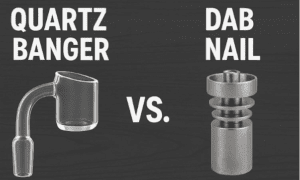Efficiency and technology often go hand in hand, especially in industries where precise operations are crucial. Have you ever thought about how small components like valves can make a huge difference? They play an essential role in controlling the flow of fluids or gases, and self-lapping rotating disc valves are at the forefront of this technology.
These valves are not just about performance; they also help reduce stress on systems, thereby enhancing overall efficiency.
What is a Self-Lapping Rotating Disc Valve?
At its core, a self-lapping rotating disc valve is a special type of valve designed to manage flow effectively. Imagine a door that only opens in one direction but can handle various pressures and temperatures.
This is akin to how these valves operate. The valve’s rotating disc moves to allow or restrict fluid flow, while its self-lapping feature ensures a tight seal, minimizing leaks.
Understanding the Benefits of Self-Lapping Design
One of the standout features of these rotating disc valves is their self-lapping design. When the disc rotates, it creates a sealing surface that meshes perfectly with the valve body.
Self-lapping valves can reduce leakage compared to traditional valves. This efficiency not only saves costs associated with lost fluids but also helps maintain system pressure.
Why Rotating Valves Are More Efficient
Rotating valves, particularly self-lapping ones, bring several advantages to the table. For starters, they are capable of handling higher pressures and flows.
Their design allows for rapid opening and closing, making them ideal for processes that require quick adjustments. With a valve that operates smoothly, stress on other system components is also reduced, allowing the whole operation to perform better.
Reduced Stress in Various Applications
From water treatment plants to chemical manufacturing, industries benefit immensely from the use of self-lapping rotating disc valves. Because these valves reduce stress on pumps and piping systems, they lead to fewer breakdowns and lower maintenance needs.
When machinery operates smoothly, it means less downtime and higher productivity. The less wear and tear on equipment also saves money in the long run.
Applications of Self-Lapping Rotating Disc Valves
Self-lapping rotating disc valves are versatile and can be used in many applications. In water treatment facilities, maintaining proper flow is crucial. These valves help control the movement of water, ensuring it flows correctly through various systems.
High pressures and corrosive fluids are common in chemical plants. Self-lapping rotating disc valves withstand these conditions while maintaining efficiency.
In the oil and gas industry, where safety and reliability are paramount, these valves help manage the flow of potentially hazardous materials with ease.
Choosing the Right Valve for Your Needs
When it comes to selecting the right valve, you’ll want to consider several factors. Start by assessing the flow rate and pressure needs of your operation.
Next, think about the materials that will come into contact with the valve. This is important, particularly in corrosive environments.
If you’re unsure, it can be beneficial to visit Everlasting Valve Company, where you can find expert advice tailored to your specific needs. Their expertise can help guide you to the most efficient solution.
Embracing Efficiency with Self-Lapping Valves
Self-lapping rotating disc valves stand out for their ability to improve efficiency and reduce stress in various applications. As industries seek out ways to enhance productivity and reduce costs, these innovative valves will remain essential tools.
Consider the role of valves in your operations and explore how they can make a difference. By investing in the right technology, you can achieve incredible efficiency gains in your processes.
Check out our other helpful articles on our website.





























